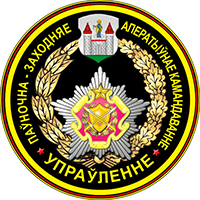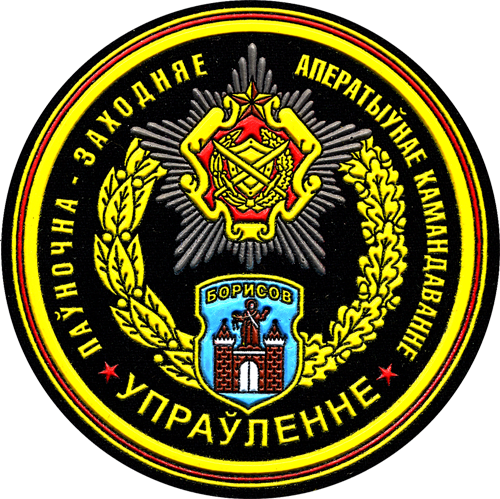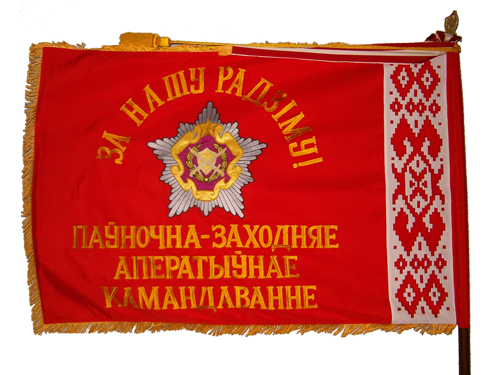 North-Western Operational Command
North-Western Operational Command

History


Historical brief
The history of the North-Western Operational Command goes back to World War II. On 22 October 1942, the 65th Army was set up within the Don Front from the 4th Tank Army. Since the time and till the end of the war, the army was led by an experienced Soviet general, Pavel Batov. Under his command it marched from Stalingrad to East Prussia and Rostock.
The army took an active part in the Battle of Stalingrad. From late October to mid-November, during the strategic defensive operation, it fought on the right bank of the Don River, containing the enemy from the north. When the Soviet forces went into counter-offensive and encircled the Nazis, the 65th Army was blocking the enemy from northwest. In January – early February 1943, the army participated in the defensive operation to defeat the encircled enemy.
When the Battle of Stalingrad was over, the 65th Army was deployed in the Oryol direction. Assigned to the Central (later Belarusian) Front on 15 February 1943, it was advancing in the Sevsk direction till March.
In the Battle of Kursk, the army conducted defence, countering the enemy’s attack from Sevsk.
From late August to September 1943, the army took part in the Chernigov–Pripyat operation, forcing the rivers Desna and Sozh and liberating Sevsk and Novgorod-Seversky. In October, the 65th Army resumed the offensive, crossed the Dnieper and in cohesion with the 61st Army secured a bridgehead near Loyev.
In the summer of 1944, the 65th Army participated in Operation Bagration. The Belarusian Strategic Offensive Operation began on 23 June 1944 and resulted in the liberation of Belarus. In its course, the army fought heavy battles for Bobruysk, Slutsk, Nesvizh, Baranovichi, Osipovichi, Staryye Dorogi and Parichi.
During the Lublin–Brest Offensive, the 65th Army together with the 48th and 28th Armies defeated some forces of the German 2nd Army north of Brest and approached the Western Bug River in late July 1944. From August to early September, the 65th Army forced the Western Bug and secured a bridgehead on the Narew River. From the positions gained, the army and other Soviet forces launched a successful offensive, defeating the Nazis in East Prussia and clearing Nasielsk, Plonsk, Brodnica and over 800 other towns and villages.
From January to April 1945, the army fought within the 2nd Belarusian Front in the Mlawa – Elbing and East Pomeranian Strategic Operations.
The 65th Army completed its combat record in the Battle of Berlin. During the Berlin Strategic Offensive it crossed the Oder south of Stettin, advanced further towards Friedland – Demmin and reached the Baltic coast and the island of Rugen.
In the course of the Great Patriotic War, the 65th Army marched 3,525 km. Led by Pavel Batov, the army fought the enemy from the Volga to the Baltic Sea, liberated over 2,500 settlements and crossed 70 wet gaps.
The army’s feats of arms were highly appreciated: 43 units received honorary titles, 102 orders were awarded to the units, 304 service members became Heroes of the Soviet Union and over 100,000 personnel were decorated with various orders and medals.
Since 10 June 1945, the army was guarding the Baltic coast within the Northern Group of Forces. In 1946–1947, the 65th Army was transformed into the 7th Mechanised Army and then the 7th Independent Cadre Tank Division within the Northern Group of Forces.
In 1948–1949, the division was redeployed to Borisov, Belarusian Military District and transformed into the 7th Mechanised Army. In 1957, it was renamed the 7th Tank Army.
In 1993–1994, the 7th Tank Army was renamed the 7th Army Corps and then the 65th Army Corps within the Armed Forces of the Republic of Belarus.
As a result of reforms held in the Belarusian Armed Forces, in December 2001 the 65th Army Corps was reorganised into the North-Western Operational Command.





